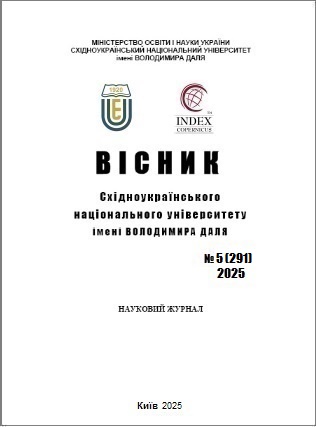Study of the influence of laser radiation adsorbers on the ablation of carbon fiber-reinforced plastic by femtosecond laser pulses
DOI:
https://doi.org/10.33216/1998-7927-2025-291-5-59-63Keywords:
CFRP, carbon fiber, laser processing, femtosecond laser, cutting, ablationAbstract
Carbon fiber-reinforced plastics (CFRPs) have gained popularity due to their advantageous properties, including a high strength-to-weight ratio, resistance to chemicals, and design flexibility. However, the processing of these composite materials remains challenging due to the heterogeneity between carbon fibers and the polymer matrix. Laser ablation, particularly with ultrafast femtosecond lasers, has emerged as a promising technique for the precise machining of CFRPs. Advantages of this technique include minimal thermal damage and improved ablation precision. However, disparities in ablation rates between the epoxy matrix and carbon fibers frequently impede process efficiency. The present study investigates the use of hydroxyapatite-based additives to enhance laser–material interaction and optimize the ablation behavior of CFRP systems. Specifically, copper-substituted hydroxyapatite (Cu-HAp) microparticles, which are known for their strong absorption in the near-infrared (NIR) region around 1030 nm, were synthesized and introduced into the epoxy matrix. Calcium hydroxyapatite (Ca-HAp), a thermally stable and biocompatible ceramic with low NIR absorption, was utilized as a reference to assess the specific contribution of copper ions. Epoxy composites with 5 wt.% of various filler compositions (100% Cu-HAp, 75% Cu-HAp/25% Ca-HAp, and 50% Cu-HAp/50% Ca-HAp) were prepared and incorporated into CFRP laminates. Femtosecond laser ablation at 1030 nm was performed under optimized conditions for each sample type, followed by evaluation of the resulting surface morphology using optical profilometry and SEM. The findings indicated that the incorporation of Cu-HAp fillers promoted enhanced energy absorption, thereby facilitating more efficient ablation with reduced thermal damage in comparison to unmodified epoxy and Ca-HAp-filled systems. Replacing Cu-HAp with Ca-HAp increased the required laser fluence and energy input. This indicates that copper ions enhance localized heating and energy coupling. SEM imaging showed that Cu-HAp particles had a porous, aggregated morphology that redistributed thermal energy, while Ca-HAp had denser, more homogenous filler structures with reduced porosity. This work shows the potential of Cu-HAp as a functional additive to adjust how femtosecond laser radiation interacts with composite materials and improve micromachining outcomes. The findings support the feasibility of using NIR-absorbing ceramic fillers to deal with common issues associated with laser processing of CFRPs, including heat-affected zones and ablation inhomogeneity.
References
1. Machining of carbon fibre reinforced plastics / E. Uhlmann et al. Procedia CIRP. 2014. Vol. 24. P. 19–24. URL: https://doi.org/10.1016/j.procir.2014.07.135
2. Analysis and optimization of the heat affected zone of CFRP by femtosecond laser processing / M. Chen et al. Optics & laser technology. 2023. Vol. 167. P. 109756. URL: https://doi.org/10.1016/j.optlastec.2023.109756
3. Study on the CFRP nanosecond laser cutting damage and efficiency by aspiration system assisted method / C. Chen et al. Journal of manufacturing processes. 2023. Vol. 102. P. 95–105. URL: https://doi.org/10.1016/j.jmapro.2023.07.031
4. Femtosecond laser drill high modulus CFRP multidirectional laminates with a segmented arc-based concentric scanning method / C. Zhao et al. Composite structures. 2023. P. 117769. URL: https://doi.org/10.1016/j.compstruct.2023.117769
5. Mechanism of selective texturing of CFRP by femtosecond laser / K. Li et al. Composites part B: engineering. 2024. P. 112000. URL: https://doi.org/10.1016/j.compositesb.2024.112000
6. Comparison of the effects of femtosecond and nanosecond laser tailoring on the bonding performance of the heterojunction between PEEK/CFRP and Al–Li alloy / J. Chen et al. International journal of adhesion and adhesives. 2023. P. 103483. URL: https://doi.org/10.1016/j.ijadhadh.2023.103483
7. Absorbance study of powder conditions for laser additive manufacturing / B. Brandau et al. Materials & design. 2022. Vol. 216. P. 110591. URL: https://doi.org/10.1016/j.matdes.2022.110591
8. Nishiyama H., Nara H., Kawabe H. Direct laser microprinting of hydroxyapatite-clad structures by photoreduction-triggered nanomaterial deposition. Optical materials express. 2023. URL: https://doi.org/10.1364/ome.506246
9. Kolmas J., Marek D., Kolodziejski W. Near-Infrared (NIR) spectroscopy of synthetic hydroxyapatites and human dental tissues. Applied spectroscopy. 2015. Vol. 69, no. 8. P. 902–912. URL: https://doi.org/10.1366/14-07720
10. Exploring the various effects of Cu doping in hydroxyapatite nanoparticle / A. Noori et al. Scientific reports. 2024. Vol. 14, no. 1. URL: https://doi.org/10.1038/s41598-024-53704-x
11. Pérez-Barrado E., Darton R. J., Guhl D. Synthesis and applications of near-infrared absorbing additive copper hydroxyphosphate. MRS communications. 2018. Vol. 8, no. 03. P. 1070–1078. URL: https://doi.org/10.1557/mrc.2018.144.

